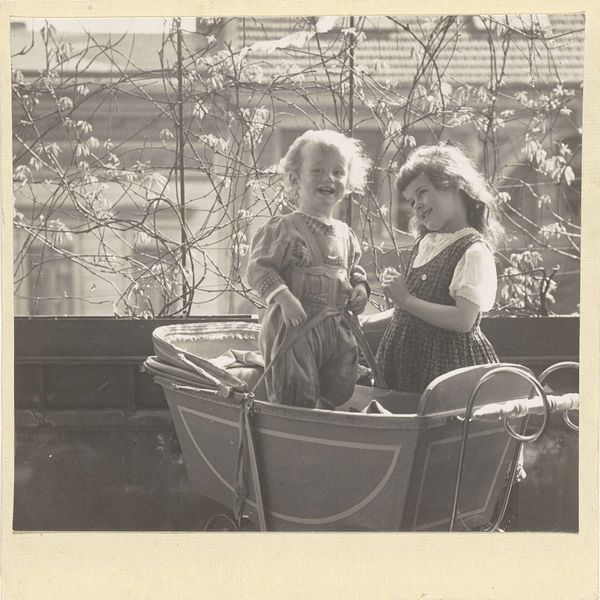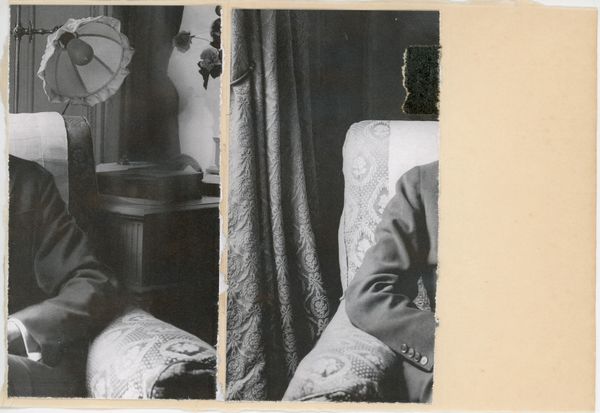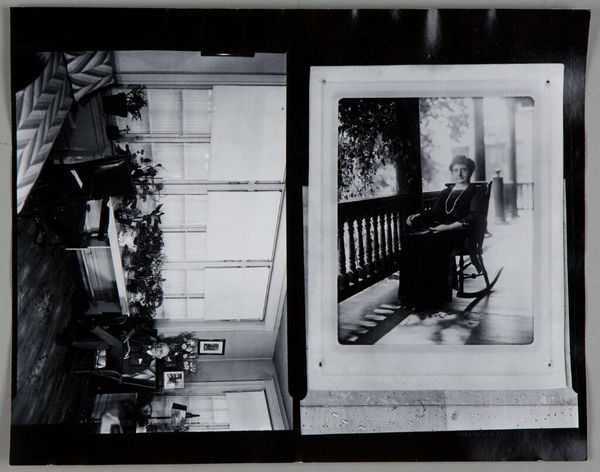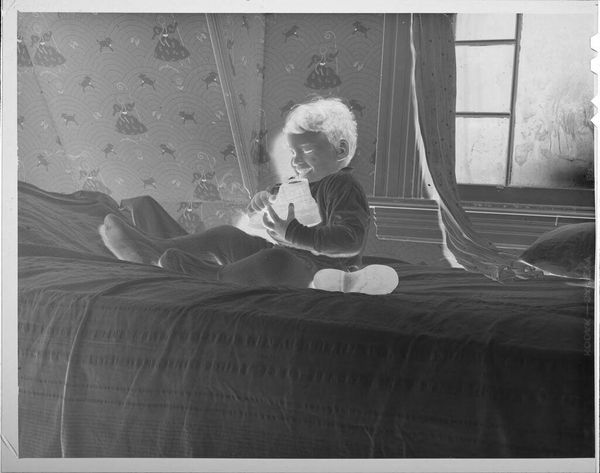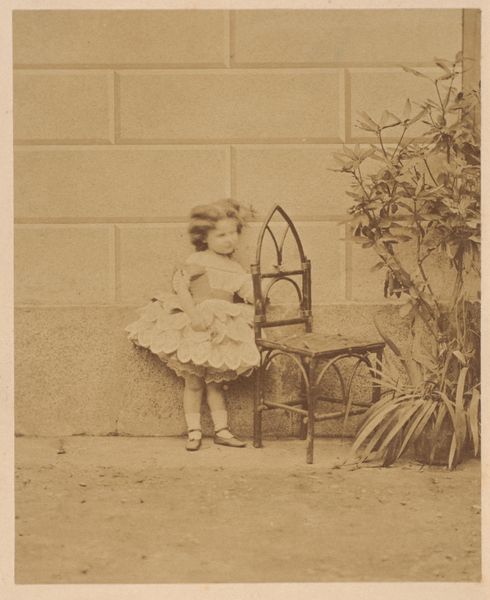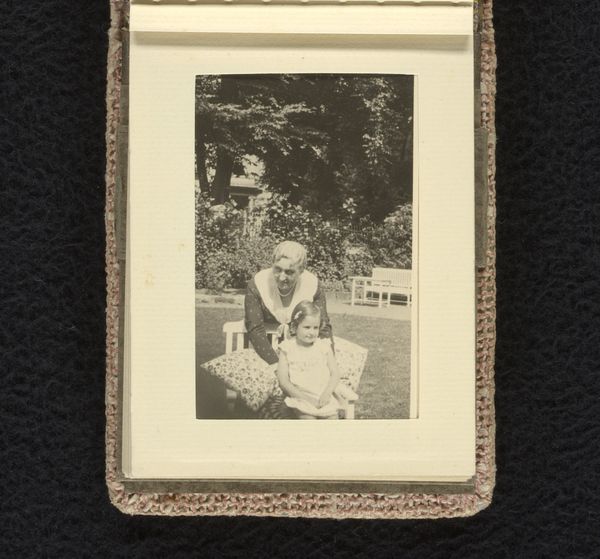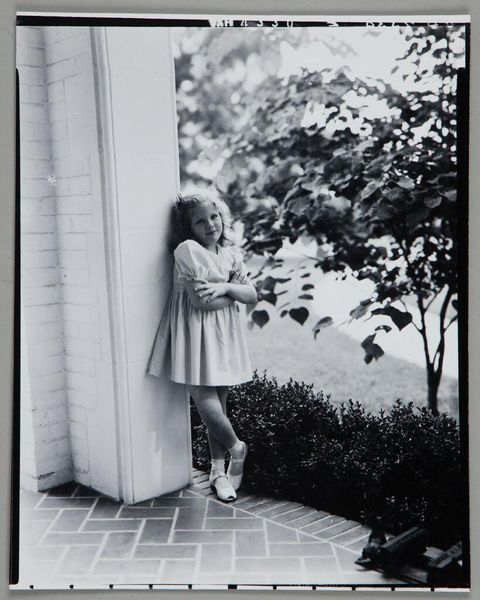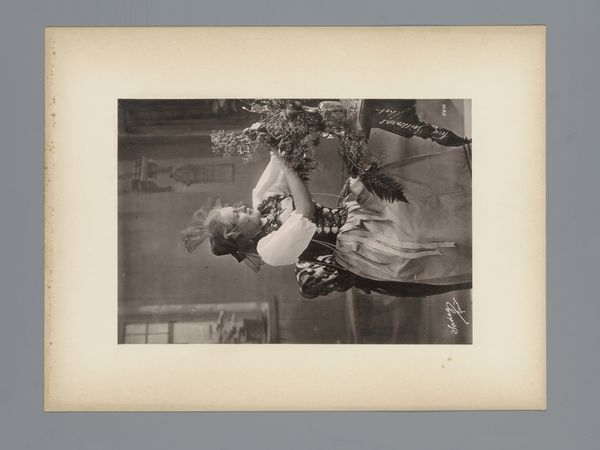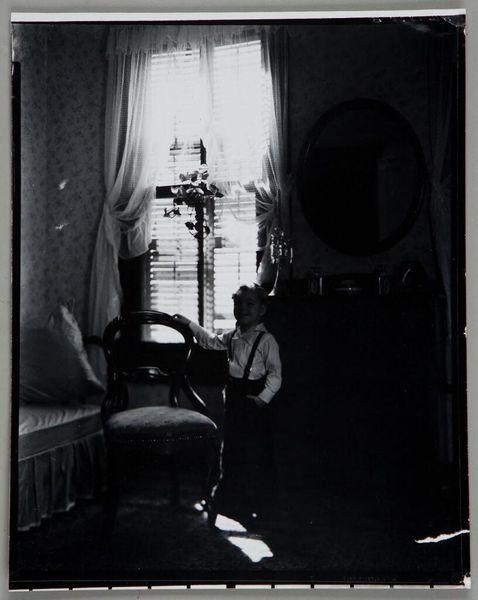
Eckart Titzenthaler, zoon van de fotograaf, op een balkon van het woonhuis in de Friedrichstrasse, Berlijn Possibly 1917
0:00
0:00
photography, gelatin-silver-print
#
portrait
#
german-expressionism
#
archive photography
#
photography
#
historical photography
#
historical fashion
#
gelatin-silver-print
Dimensions: height 65 mm, width 96 mm, height 80 mm, width 101 mm
Copyright: Rijks Museum: Open Domain
Editor: We’re looking at a gelatin silver print, “Eckart Titzenthaler, zoon van de fotograaf, op een balkon van het woonhuis in de Friedrichstrasse, Berlijn”, possibly from 1917, by Waldemar Titzenthaler. The boy's position, pushing up and towards the viewer, is striking. What do you see in the tonal gradations and the staging of the photograph? Curator: Observe how Titzenthaler meticulously frames the boy against the backdrop of the window. The lines formed by the branches, contrasted with the softer contours of the child, create a compelling tension. The overall composition emphasizes geometric forms softened by light. Editor: So you're focusing on the composition over the emotional aspect? I saw it more as a father capturing a moment of his son. Curator: While biographical context provides one avenue for interpretation, it is fruitful to investigate how the formal qualities—the interplay of light, shadow, and line—construct meaning. Notice, for example, how the subtle differences in light articulate texture. The luminosity falling across the face juxtaposed with the comparative lack of detail on the balcony. What is emphasized by the gradations of light, the formal structures that convey a specific artistic intention? Editor: I see how the contrast guides my eye toward his face. So, the window, the branches—they’re all structural elements contributing to the portrait's overall effect. It is interesting to isolate those structural decisions. Curator: Precisely. The photograph, understood in formal terms, becomes a dialogue between planes, textures, and light, rather than solely an expression of paternal affection. Editor: Thank you, seeing the composition like that reveals so much more than what meets the eye at first glance. Curator: Indeed. Considering the underlying visual components often enhances and refines our perception.
Comments
No comments
Be the first to comment and join the conversation on the ultimate creative platform.
